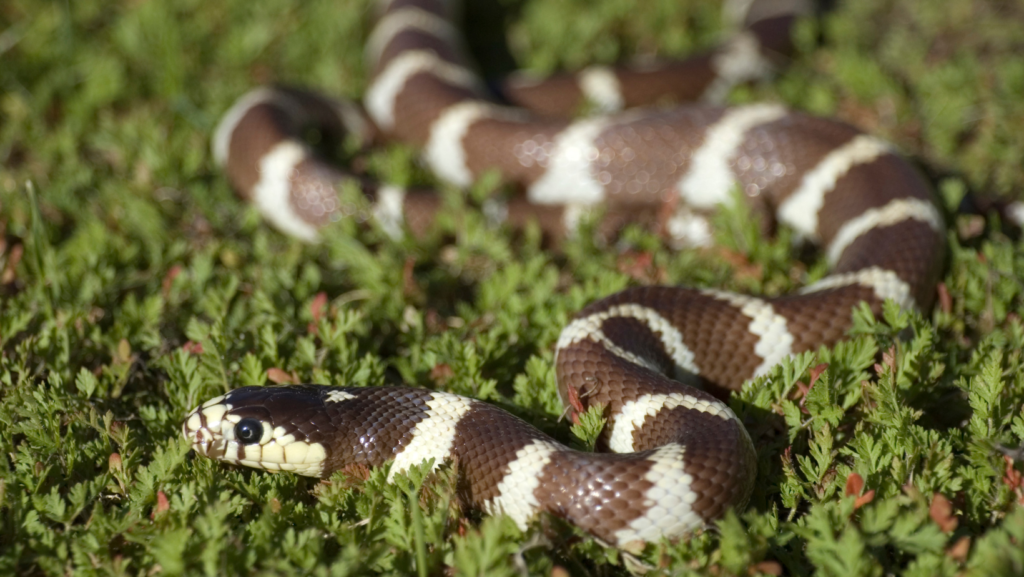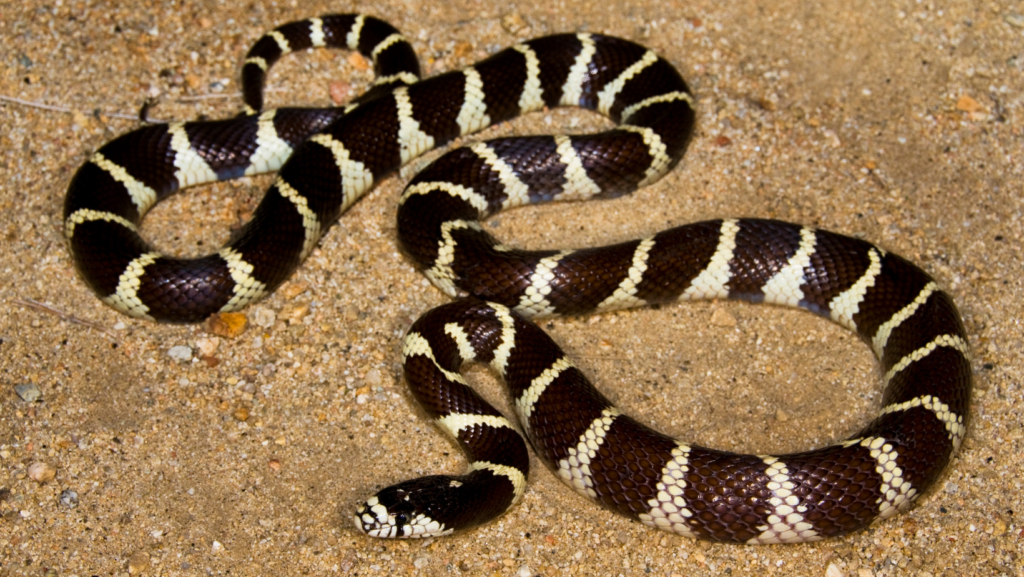California Kingsnakes (Lampropeltis getula californiae) are non-venomous colubrid snakes native to the western United States.
Birth and Early Life:

California Kingsnakes (Lampropeltis getula californiae) are non-venomous colubrid snakes native to the western United States. The birthing process, known as ovoviviparity, is characteristic of kingsnakes. Females give birth to live young after carrying eggs internally, with litters typically ranging from 5 to 20 snakes. These neonates are independent from birth and must fend for themselves.
Growth and Development:
As the California Kingsnakes grow, they undergo several developmental stages. The young snakes are equipped with the necessary instincts for survival, including hunting and seeking shelter. They rely on a diet of appropriately sized prey, often including rodents, lizards, and other small reptiles. Kingsnakes are known for their adaptability and can thrive in various environments, from deserts to woodlands.
Habitat and Diet:

California Kingsnakes exhibit a wide distribution throughout their native range, including California, Nevada, Arizona, and parts of Oregon. They are highly adaptable and can be found in diverse habitats such as grasslands, chaparral, woodlands, and even urban areas. Kingsnakes are excellent climbers and may be seen exploring bushes or trees in search of prey.
Their diet consists mainly of rodents, birds, eggs, and other small vertebrates. The impressive constriction ability of kingsnakes allows them to overpower and consume prey much larger than their own head, which is a crucial adaptation for survival.
Reproduction:

California Kingsnakes become sexually mature at around 2 to 3 years of age. Breeding typically occurs in the spring, and females may produce one or two clutches of eggs each year. After a gestation period of approximately 50 to 60 days, the female gives birth to a brood of live young. This reproductive strategy contributes to the survival of the species by increasing the chances of offspring reaching maturity.
Lifecycle and Longevity:
The average lifespan of a California Kingsnake in the wild is around 15 to 20 years. However, various factors such as predation, environmental conditions, and availability of resources can influence their lifespan. These snakes play a crucial role in controlling rodent populations, contributing to the overall balance of their ecosystems.
Death and Conservation:

California Kingsnakes face threats from habitat loss, road mortality, and occasionally, persecution by humans who misunderstand or fear them. However, they are not currently listed as a threatened or endangered species. Conservation efforts often focus on preserving their natural habitats and raising awareness about the benefits of these snakes in controlling rodent pests.
In conclusion, the California Kingsnake’s life cycle is a testament to its adaptability and resilience. From birth through growth, reproduction, and ultimately contributing to the balance of their ecosystems, these snakes play a vital role in the intricate web of life in the western United States.

